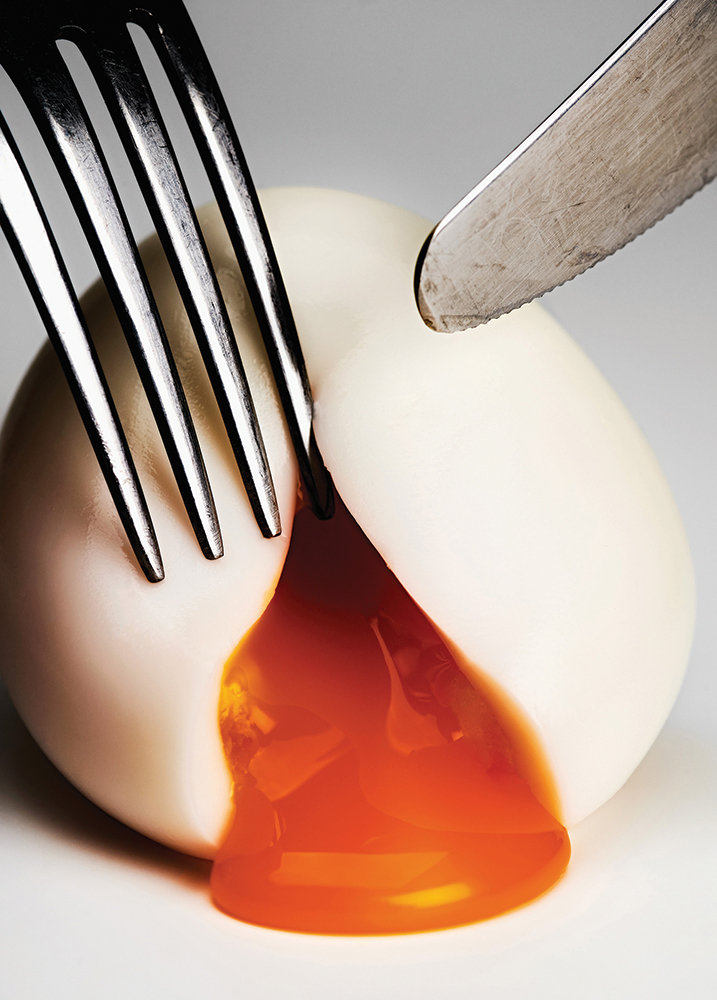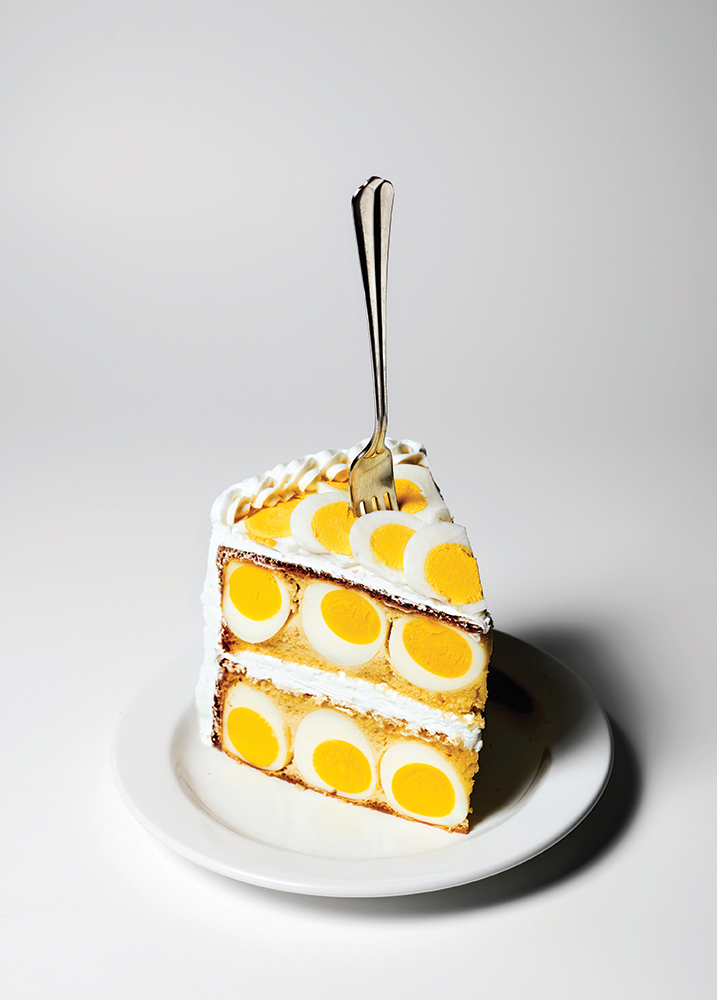Didi Culley explains How The Humble Egg Has Inspired Iconic Designs from fashion to furniture …
How do you like your eggs? You might say poached, scrambled, or over easy – but what about on top of a building? In the shape of a chair? or carried around as a handbag? The humble egg has provided inspiration well beyond the kitchen and is celebrated in all its guises in The Gourmand’s Egg: A Collection of Stories and Recipes (Taschen). The book is the first of a series, each exploring the cultural and culinary significance of a single ingredient. And while you might not connect your breakfast with the story of the origin of the world, eggs have had symbolic resonance since time immemorial, and have been enjoyed for their comic, religious – and even erotic effect ever since.

Breakfast and Brunch, 2021. Photograph by Bobby Doherty.
Celebrated sculptors Constantin Brâncu?i and Barbara Hepworth were fascinated by the egg’s biomorphic shape and its natural beauty. Both used the shape of the egg as the foundation for many of their most compelling works, including Brâncu?i’s The Beginning of the World (1924) and The Newborn (1915), and Hepworth’s Oval Sculpture (1943) and Three Forms (1934). Hepworth, quoted in The Gourmand’s Egg, noted that if someone can enjoy an egg for its shape, they have taken “one step towards a true appreciation of sculpture”.
Designers were also inspired by the egg as a primordial form, the kind that might feel comfortable to sit in. Architect Arne Jacobsen designed his famous Egg chair in 1958 as part of the building of the Royal Hotel in Copenhagen for Scandinavian Airlines (SAS). The lobby chair proved so popular that other egg-inspired furniture began to appear in Scandinavian and French furniture showrooms and still do to this day, like the highly collectible Ovalia chair (1968) or Ikea’s PS Lömsk chair manufactured for children since 2002. The notion of an egg as a safe place also inspired numerous buildings, such as the 1966 mid-century modern The Egg concert hall in Albany, New York, Japanese architect Tadao Ando’s 1995 Nagaragawa Convention Centre, and more recently, Shigeru Ban’s music and performing arts centre – a giant floating egg on the river Seine in Paris.

Simply Eggs, 2021. Photograph by Bobby Doherty.
While appreciated for their morphology and symbolism, eggs can also offer a bit of fun. Architect Sir Terry Farrell’s iconic postmodernist TV-AM building in Camden came to be known colloquially known as Eggcup House for its dozen of three-foot-high eggs in cups on plinths proudly interrupting the north London skyline. Similarly, Salvador Dali, surrealism’s most eccentric egg-obsessive, used eggs in recipes, films, and some of his most famous paintings, decorated the roofs of both the Theatre-Museum in Figueres and his own house in Cadaqués with giant eggs.

Egg Cake, 2021. Photograph by Bobby Doherty.
The egg has also inspired some iconic fashion moments. Icelandic musician Björk, dressed in a swan dress, performatively laid eggs on the red carpet at the Oscars in 2001, as security guards scurried to pick them up. A decade later Lady Gaga arrived to the Grammys “incubating” in a giant egg, only to hatch out of her ovoid on stage to perform her song with giant eggs Born this Way. Truly, from the functional to the outlandish, eggs are everywhere. From inspiration in pop art to symbols of post-colonial identity, from egg recipes from around the world, to a photography essay of egg accessories by Robin Broadbent, The Gourmand’s Egg does not aim to be definitive, but is a good crack at celebrating a humble ingredient that has inspired so much.






